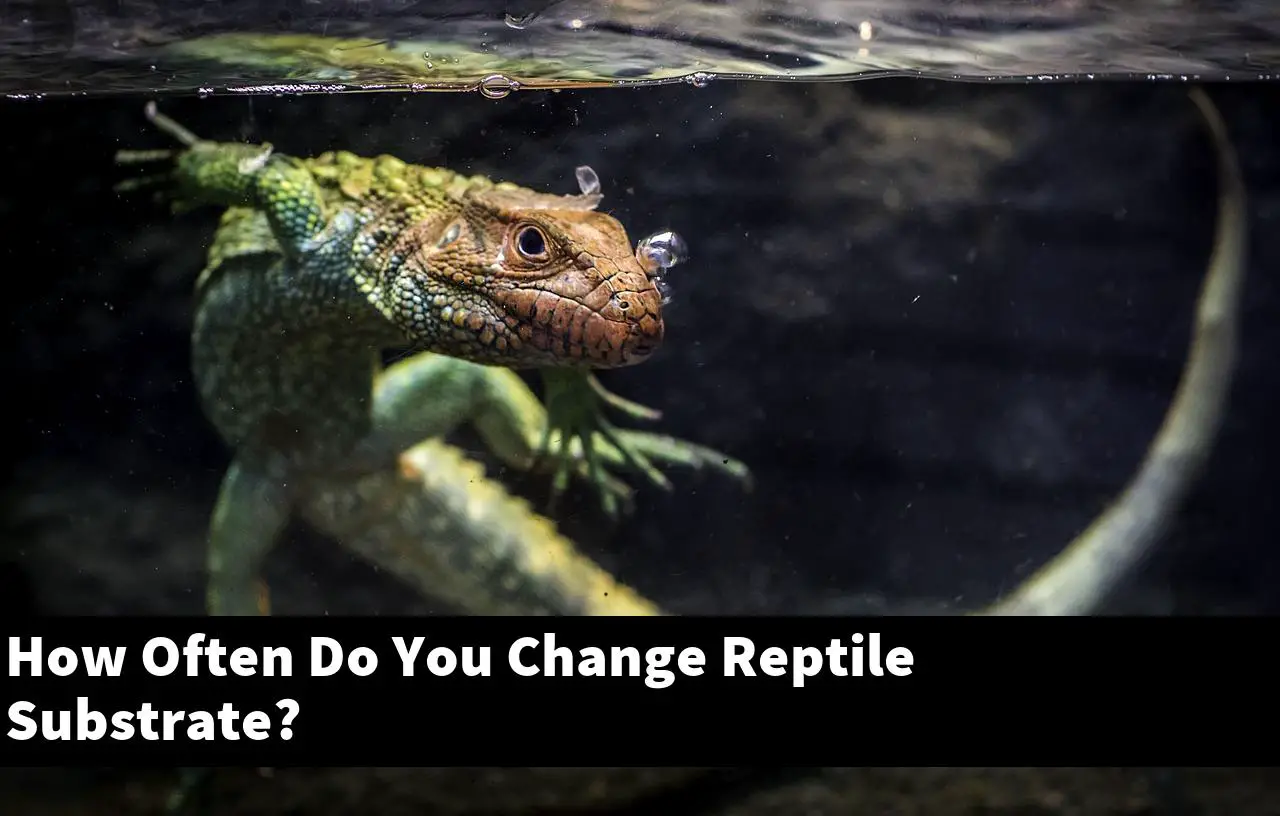If you have a reptile, you probably know that their substrate (the material they sit on or in) needs to be changed often. But how often, exactly? In this blog post, we’ll discuss how often you should be changing your reptile’s substrate, and why.
Table of Contents
How often should you change your reptile’s substrate?
Assuming you are referring to reptiles that are kept as pets, the frequency with which you should change their substrate (the material used to line their habitat, such as sand, soil, or bark) depends on several factors. These include the size of your pet, the type of substrate you are using, and whether or not you have a filtration system in place.
As a general rule of thumb, you should change your reptile’s substrate at least once a month. However, if you have a large reptile or one that is particularly active, you may need to change it more often. Similarly, if you are using a substrate that is difficult to clean, such as sand, you may need to change it more frequently.
If you have a filtration system in place, it will help to reduce the frequency with which you need to change your reptile’s substrate. However, it is still important to clean the substrate regularly, as it can become contaminated with waste and other debris.
What are the benefits of changing your reptile’s substrate regularly?
There are many benefits of changing your reptile’s substrate regularly.
First, it helps to keep your reptile’s habitat clean and free of bacteria.
Second, it provides your reptile with a more natural environment and allows them to exercise their natural digging and foraging behaviors.
Third, it helps to prevent your reptile from becoming bored or stressed by providing them with a new and different substrate to explore.
Finally, it can also help to control parasites and other pests that may be present in your reptile’s habitat.
What are some of the best substrates for reptiles?
There are a variety of substrates that can be used for reptiles, and the best substrate for your reptile will depend on the species of reptile you have and its individual needs.
Some common substrates for reptiles include:
- Sand
- Soil
- Gravel
- Bark chips
Sand is a popular substrate for reptiles, as it is easy to keep clean and provides good drainage. However, sand can be abrasive to your reptile’s skin and can also be ingested, which can cause digestive problems.
Soil is another popular substrate for reptiles. It is natural and easy to find, and can be used to create a variety of different habitats. Soil can also be used to grow live plants, which can provide your reptile with food and enrichment.
Gravel is another common substrate for reptiles. It is easy to keep clean and provides good drainage, but can also be abrasive to your reptile’s skin.
Bark chips are a popular substrate for reptiles because they are natural, easy to find, and provide good drainage. However, bark chips can be dusty and may contain harmful chemicals.
How do you clean bearded dragon poop on reptile carpet?
There are a few ways to clean bearded dragon poop on reptile carpet.
- The first way is to use a paper towel or cloth to pick up the poop and then dispose of it in the trash.
- The second way is to use a reptile carpet cleaner or spot cleaner to remove the poop.
- The third way is to use a vacuum cleaner with a hose attachment to suck up the poop.
How often do you change bearded dragon substrate?
Most bearded dragon owners change their substrate on a monthly basis. Some may change it more often if their dragon is particularly messy, while others may change it less often if their dragon is particularly tidy.
The key is to keep an eye on the substrate and to change it when it starts to look dirty or when it starts to smell bad.
How often do you change bearded dragon carpet?
As a general rule of thumb, you should change your bearded dragon’s carpet every two to three weeks. Of course, this may vary depending on the size of your reptile and the amount of traffic in their enclosure.
If you have a larger bearded dragon or if their home is frequently used by other pets or children, you may need to change the carpet more often.
If you have a small bearded dragon who lives in a secluded area, you may be able to get away with changing the carpet less often. Ultimately, it is important to use your best judgment and to clean the enclosure as often as necessary to ensure your bearded dragon’s health and wellbeing.
How often replace loose substrate?
It’s important to replace loose substrate regularly to ensure that your plants are getting the nutrients they need. The best way to do this is to use a soil test kit to check the nutrient levels in your soil. If the levels are low, you can add more substrate to your garden bed.
Summary
There are a variety of factors to consider when determining how often to change your reptile substrate, including the type of substrate you’re using, the size of your enclosure, and the number of reptiles you have.
A good rule of thumb is to change the substrate every two to four weeks, but be sure to keep an eye on your reptiles and their enclosure to ensure that they’re staying healthy and happy.

